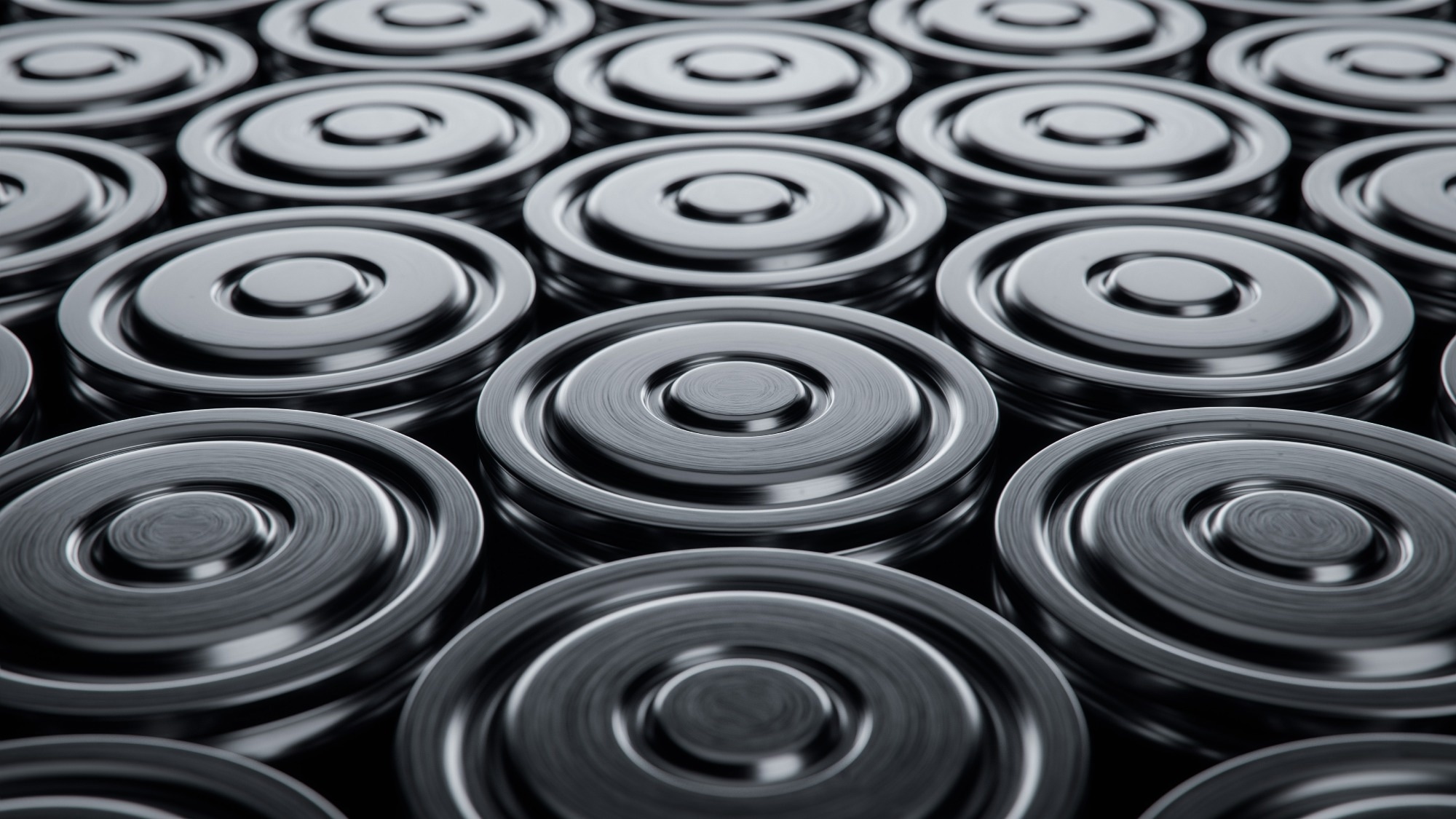Sponsored by Mo-SciReviewed by Louis CastelMay 15 2025
Polymer-based resins, including epoxy, polyurethane, and silicone, are widely used for battery systems' sealing and potting tasks. By filling voids within battery enclosures, these compounds facilitate thermal dissipation and electrical insulation, while also safeguarding against mechanical stress, chemical exposure, and moisture.1

Image Credit: IM Imagery/Shutterstock.com
Despite offering these benefits, resins may present intrinsic limitations when used independently.2 As a result, attaining peak functionality in potting adhesives has remained a significant challenge over the past decade. This includes meeting requirements such as minimal dielectric loss, improved shock resistance, high thermal conductivity, and stable weight.3
Composite materials offer a solution: incorporating glass components, such as glass fibers and hollow or solid glass microspheres, enables the formation of composite materials with enhanced thermomechanical, structural, and electrical characteristics.4
Glass Fibers: Reinforcing Strength and Sustainability
Glass fibers are composed of ultra-fine strands of non-crystalline glass. Their excellent surface-area-to-weight ratio and the consistency of properties resulting from their amorphous structure make them particularly valuable.4,5 When combined with epoxy, these composites are commonly applied in structural applications and valued for their exceptional mechanical attributes.6
In battery-related uses, these features reinforce the composite’s ability to withstand mechanical shocks and vibrations, increasing durability and reliability. Utilizing recycled glass fibers further supports sustainability goals by minimizing waste, aligning with the industry’s push toward circular economy practices.4
Hollow and Solid Glass Microspheres: Lightweight Innovation with Multifunctional Benefits
Hollow glass microspheres, often referred to as microballoons, are thin-walled glass bubbles with a void in the center. The balloon sizes generally range from 10 to 90 microns, and they have low density, high crush strength, and chemical durability.
Their shape and smooth surface minimize stress concentrations at the interface between the fillers and matrix, improving structural cohesion. When incorporated into resins, they produce polymer composites with augmented thermal and acoustic insulation, reduced weight, and increased fracture resistance, making them well-suited for advanced applications.7,8
Solid glass microspheres are spherical particles made from glass. These particulates are valued as fillers for polymer composites due to their distinct characteristics, including tailored thermal conductivity, isotropy, smooth spherical surfaces, and minimal stress concentration at the filler-matrix interface. Their uniform shape ensures consistent shrinkage and improves the processability of filled materials, reducing orientation effects during molding.11,12
In battery potting applications, engineered solid glass microspheres are ideal for protecting sensitive components due to their ability to enhance insulation performance, increase thermal conductivity, and ensure reliable material properties.
Silane Coatings: Seamlessly Bonding Glass and Polymer for Superior Composites
Silanization is a surface modification method employed to boost the interfacial adhesion between glass particulates, such as microspheres and fibers, and polymer resins in composite materials. Through silane coupling agents, a strong chemical bond is formed between the glass and the polymer, substantially improving the composite's mechanical properties, loading capabilities, and surface adhesion.13
This surface modification method has also effectively safeguarded glass fibers against mechanical damage during processing and environmental degradation, making it especially advantageous for battery potting applications.4
Tailored Glass Solutions from MO SCI
Incorporating glass materials into polymer resins allows scientists to develop composites that satisfy the rigorous requirements of contemporary battery technology and promote increased sustainability and safety.
MO SCI’s expertise in manufacturing high-performance glass fibers and microspheres, along with proficiency in advanced silane coating technologies, guarantees customized solutions for optimizing battery potting and sealing materials.14,15
References and Further Reading:
- Araujo, K. (2025). Battery Pack Potting and Encapsulation - Optimized Battery Performance. (online) Epec, LLC. Available at: https://www.epectec.com/batteries/potting-and-encapsulation.html (Accessed 5 May 2025).
- Yang, L., et al. (2024). Characterization of Potting Epoxy Resins Performance Parameters Based on a Viscoelastic Constitutive Model. Polymers, (online) 16(7), pp.930–930. https://doi.org/10.3390/polym16070930.
- Hu, J.B. (2020). High-performance ceramic/epoxy composite adhesives enabled by rational ceramic bandgaps. Scientific Reports, 10(1). https://doi.org/10.1038/s41598-019-57074-7.
- George-Valentin Săftoiu, Constantin, C., et al. (2024). Glass Fibre-Reinforced Composite Materials Used in the Aeronautical Transport Sector: A Critical Circular Economy Point of View. Sustainability, 16(11), pp.4632–4632. https://doi.org/10.3390/su16114632.
- Park, S.-J. and Seo, M.-K. (2011). Element and Processing. Interface Science and Composites, 18, pp.431–499. https://doi.org/10.1016/b978-0-12-375049-5.00006-2.
- Safi, S., Zadhoush, A. and Masoomi, M. (2016). Evaluation of interfacial properties of the silane blend sized glass fiber–epoxy composite by the microdroplet test. Journal of Composite Materials, 51(11), pp.1573–1581. https://doi.org/10.1177/0021998316661620.
- Liang, J.-Z. (2013). Estimation of thermal conductivity for polypropylene/hollow glass bead composites. Composites Part B Engineering, 56, pp.431–434. https://doi.org/10.1016/j.compositesb.2013.08.072.
- Wouterson, E.M., Freddy, Hu, X. and Wong, S.-C. (2004). Fracture and Impact Toughness of Syntactic Foam. Journal of Cellular Plastics, (online) 40(2), p.145. https://doi.org/10.1177/0021955X04041960.
- Mo-Sci. (2023). Porous Silica - Mo-Sci. (online) Available at: https://mo-sci.com/products/porous-silica/ (Accessed 5 May 2025).
- Li, M., et al. (2023). Preparation of DOPO-KH550 modified hollow glass microspheres/PVA composite aerogel for thermal insulation and flame retardancy. Journal of Colloid and Interface Science, 654, pp.719–730. https://doi.org/10.1016/j.jcis.2023.10.073.
- MALLICK, P.K. (2000). Particulate and Short Fiber Reinforced Polymer Composites. Comprehensive Composite Materials, pp.291–331. https://doi.org/10.1016/b0-08-042993-9/00085-1.
- Mishra, D. and Alok Satapathy (2016). An experimental investigation on the effect of particle size on the thermal properties and void content of Solid Glass Microsphere filled epoxy Composites. IOP Conference Series Materials Science and Engineering, 115, pp.012011–012011. https://doi.org/10.1088/1757-899x/115/1/012011.
- Perdum, A.-I., et al. HOLLOW GLASS MICROSPHERES TREATED WITH SILANE COUPLING AGENT. Bull., Series B, (online) 84, p.2022. Available at: https://www.scientificbulletin.upb.ro/rev_docs_arhiva/fullaef_270545.pdf (Accessed 5 May 2025).
- Mo-Sci. (2024). Glass Microspheres - Mo-Sci. (online) Available at: https://mo-sci.com/products/glass-microspheres/ (Accessed 5 May 2025).
- Mo-Sci. (2023). Custom Development Services - Mo-Sci. (online) Available at: https://mo-sci.com/services/custom-development-services/ (Accessed 5 May 2025).

This information has been sourced, reviewed, and adapted from materials provided by MO SCI, LLC.
For more information on this source, please visit MO SCI, LLC.